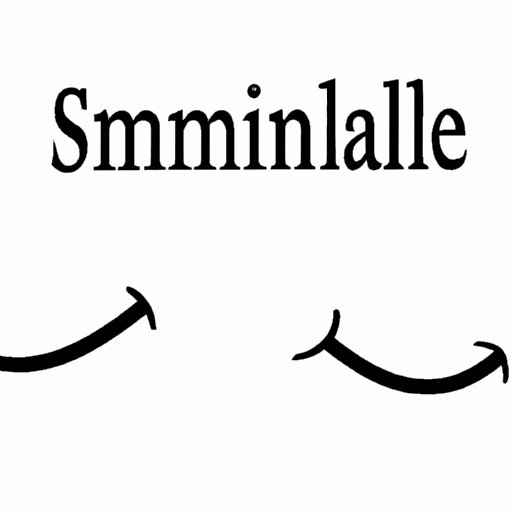Introduction
Metaphors are a powerful literary tool that can be used to add depth and clarity to your writing. By understanding the basics of metaphors and how to use them effectively, you can bring more life to your written words and create an emotional response from your readers. In this article, we will explore the definition of metaphors, their benefits, and how to use them in your writing.
Explaining the Basics of Metaphors
What is a Metaphor?
A metaphor is a figure of speech in which one thing is compared to another without using the words “like” or “as”. For example, if you say “the sky is a blanket of stars”, you are comparing the sky to a blanket of stars without actually saying that it is like a blanket of stars. This comparison gives the reader a clearer image of what the sky looks like.
How to Use Metaphors Effectively in Writing
When using metaphors in your writing, it is important to be specific and accurate. Avoid using cliches or metaphors that are too abstract. Instead, focus on creating vivid images with your words that help the reader connect with the story or idea you are trying to convey. Additionally, try to limit the number of metaphors you use in each piece of writing. Too many metaphors can be confusing and detract from the overall message.
Common Metaphors and Examples
Examples of Common Metaphors
Some common metaphors include:
- Time is money.
- The world is a stage.
- Life is a journey.
- He has a heart of stone.
- She is a nightingale.
How to Use Common Metaphors in Writing
When using common metaphors in your writing, make sure to explain the metaphor further to give the reader a better understanding of what you are trying to say. For instance, if you say “time is money”, you could expand on this metaphor by explaining how valuable time is and how it should not be wasted. This will give the reader a clearer image of what you are trying to convey.
Types of Metaphors
There are several different types of metaphors that can be used in writing. These include:
- Simile: A simile is a type of metaphor that compares two unlike things using the words “like” or “as”. For example, “she was as brave as a lion”.
- Analogy: An analogy is a comparison between two things that have similar qualities. For example, “love is like a rose; it has thorns but is still beautiful.”
- Personification: Personification is when you give human-like characteristics to something that is not human. For example, “the wind whispered secrets into the trees.”
- Allegory: An allegory is a metaphor in which a story or poem is used to represent a deeper meaning. For example, “life is a roller coaster, filled with ups and downs.”
Creating an Emotional Response
Tips for Crafting Powerful Metaphors
To create powerful metaphors, it is important to think about the feelings and emotions you want to evoke in the reader. Think about what emotions you want the reader to experience and then craft your metaphors accordingly. Additionally, try to use metaphors that are unexpected and creative to make them stand out.
Examples of Metaphors that Create an Emotional Response
Here are some examples of metaphors that can evoke an emotional response from the reader:
- Her heart was a tiny bird, fluttering and fragile.
- His words were daggers, piercing my soul.
- The storm raged like an angry beast.
Why Metaphors are Important
Conveying Complex Concepts
Metaphors are an effective way to convey complex concepts to the reader. They can be used to describe abstract ideas in a more concrete way, making them easier to understand. Additionally, metaphors can help to bring life to dry topics by adding color and creativity to your writing.
Adding Depth and Clarity to Ideas
By using metaphors in your writing, you can add depth and clarity to your ideas. Metaphors allow you to paint a picture with your words, giving the reader a clearer image of what you are trying to say. This makes your writing more engaging and interesting for the reader.
Conclusion
Metaphors are a powerful tool used to bring clarity and depth to ideas. When used effectively, they can help to create an emotional response from the reader and make your writing more engaging and interesting. By understanding the basics of metaphors and following the tips outlined in this article, you can use metaphors to bring more life to your written words.
(Note: Is this article not meeting your expectations? Do you have knowledge or insights to share? Unlock new opportunities and expand your reach by joining our authors team. Click Registration to join us and share your expertise with our readers.)
